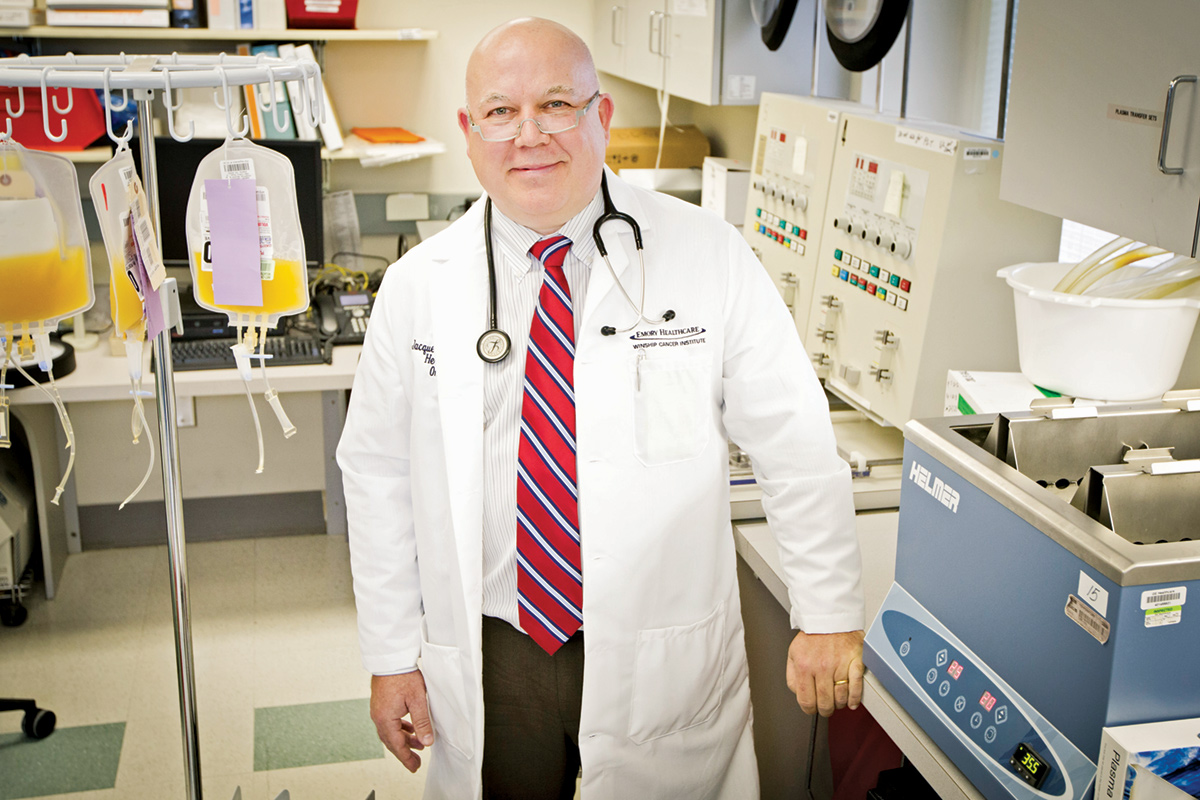Pushing the Immune System into Overdrive

Bryan Meltz
Cytokines are small, cell-signaling proteins with the ability to regulate the body’s immune response. Professor of Hematology and Medical Oncology Jacques Galipeau saw their potential to treat chronic infections, infectious diseases, and cancer through enhanced immune response therapy.
But this immune modulator needed to be able to be harnessed, controlled, and directed. “This is possible due to a remarkable new class of biological agents we invented: the GIFT fusokines,” Galipeau says.
The acronym is derived from GM-CSF Interleukin Fusion Transgene (GIFT), since the technology combines one immune system signaling molecule (GM-CSF, a cytokine) with a second, an interleukin. The number of the interleukin, say, IL-4, gives the fusokine its name: GIFT4.
Galipeau, director of the Emory Personalized Immunotherapy Center, and colleagues have engineered several of these GIFT fusokines, and continue to develop more. “The idea we had was that you could take normal hormones in the immune system, such as cytokines, and use the tools of genetic engineering to find an effective way to use them to augment the immune system,” he says, in this case, by fusing two functionally unrelated cytokines.
The resulting fusokines “dock” into receptors scattered on the outside of immune cells, and, as if flipping a switch, turn them on. “Because now you have these Siamese twins, each recruits its own receptor at the cell surface, physically causing receptor complexes to cluster together,” he says. “Think of them as electrical switches that are usually never together. This leads to a huge zap that occurs in immune cells where they become hyperactive.”
Since there are no reciprocal checkpoints to turn them off, the fusokines create huge gains in function, arising from cellular machinery that didn’t evolve to interact in that way. “The cells overreact and there is really nothing to shut them off,” Galipeau says. “It’s like giving them a five-hour energy drink. They don’t become malignant, but they become hyperactive. There is a profound immune augmentation effect.”
For example, GIFT4, which Galipeau invented with Jiusheng Deng of the School of Medicine, works by turning B cells, which help the body protect against cancers, into “the Hulk.” They can also boost a vaccine’s effectiveness, and may prove helpful for people with cancer or infectious diseases such as HIV or Hepatitis C in clearing the virus.
With GIFT7, invented by Galipeau and Hsiang-Chuan Hsieh 15M, T-cells are “exquisitely responsive,” as is the thymus, an immune gland behind the chest bone. As one gets older, the thymus shrivels up, which makes older people more prone to shingles as well as other infections. But GIFT7 has been shown to restore the thymus of elderly mice, giving them the immune system of youngsters. This helps to fight cancer, and restores T-cell function to fight viruses such as AIDS.
Galipeau’s third GIFT, GIFT9, a fusion of GM-CSF and IL-9, promotes and activates mast cell proliferation, useful to augment the body’s immune response to vaccines.
“The GIFT program is one of the most promising biologics projects we have under way, and one I am happy to be involved with,” says Cliff Michaels, licensing associate at the Office of Technology Transfer. “Dr. Galipeau has a keen eye focused on developing these further and doing the critical work necessary to move them to the clinic.”
“You can’t beat Mother Nature playing the game by her rules,” Galipeau says. “By engineering these fusion cytokines, we’ve thrown the rule book in the trash bin.”





